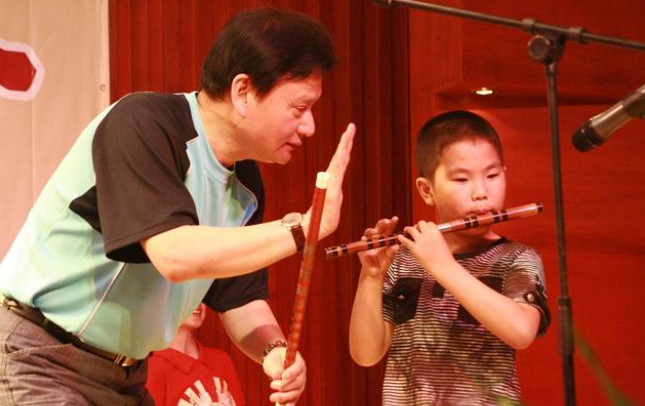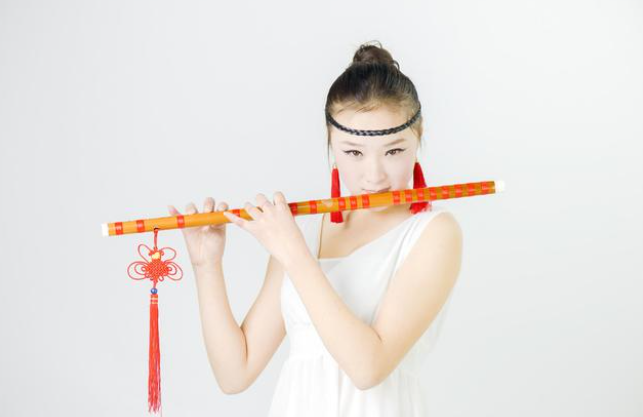What is the difference between the flat blowing and the urgent blowing of the flute?
The flute has flat blowing and urgent blowing, which are the playing skills of the flute. The flat blowing should be slow, and the urgent blowing should be fast. These two techniques often appear in the expression of the flute music. Generally, slow blowing is used for the lyrical adagio part, and urgent blowing is used for the cheerful allegro part, one slow, one fast or two slow and three fast, which are always scattered in the flute music. Flat blowing pays attention to the looseness of the mouth and the slightly larger mouth damper, while for urgent blowing, the mouth wind is finer, the mouth damper is very thin, and there is a feeling of muscle tension. The breath of urgent blowing is also very strong, and it is more difficult to grasp the shape of the damper than flat blowing. It is easy to blow certain sounds, and it is normal to blow a certain sound or blow a flower.

Practicing the flute usually starts from flat blowing, that is, from the mid-range part, which is closest to the natural breathing state of people, so it is easier to accept and play the flute faster. Flat blowing is actually slow blowing, slow blowing. At this time, the breath is also the most natural and relaxed state, and the mouth shape and tone will not be too tense. Flat blowing ensures that the sound is bright and full, without excessive force. After blowing for a period of time, you can slowly start to prepare to change the angle of the breath, so that you can adapt yourself to various flat blowing skills. You can combine various skills to practice sound, play more lyrical professional songs, and slowly you can appreciate the elegance of flat blowing!

Don't think about how fast it is at the beginning of practicing flute music, it is something that can't be achieved with haste. After practicing flat blowing, you have mastered all the skills. Later, you can gradually increase the speed and rhythm, and play the faster tunes to adapt to the faster rhythm and melody. Playing the flute is first difficult and then easy, first slow and then fast. There is a gradual process. The difference between flat and urgent is that it is slow and fast, easy and difficult. Flat blowing is good enough, and urgent blowing can also be realized slowly. The flute player himself came here like this.

Some people will deliberately pursue speed. It is a good idea to have this idea. The premise is that at least you must play each note accurately, your breath must be steady, and your fingers must be pressed accurately. Flat blowing is also a skill to comprehensively improve this ability. Only by seeking precision in slow speed can you control it accurately in extreme speed. Flat blowing looks very simple, but in fact, few people can achieve that kind of elegant feeling. Of course, except for master-level people, most people are very perfunctory or impetuous, like pretending to be vassal and elegant, but it is useless! If you listen carefully, it is full of flaws, giving people the feeling that it is not harmonious enough.

A person who can really blow flat blowing elegantly and charmingly seems to dance to the music, revealing natural harmony in every move. Maybe flat blowing is an elegant technique. Compared with urgent blowing, the nerves are not so tight. When blowing urgently, it feels very capable, clean, fast, and the sound is high-pitched and loud but not harsh. To distinguish from the whole look and behavior, Ping Chui is relaxed and personable, and Ji Chui is tense but very orderly. From the perspective of breath, flat blowing is slow and elegant, and urgent blowing is the power of passion!

No matter the tunes of the Southern School and the Northern School, there are melody that is urgent and peaceful, but the tunes of the Northern School often have urgent melody, which is related to the characteristics of local music. The songs of the southern style are more elegant and calm. Although there are some urgent parts, this part is also a particularly cheerful melody. The timbre is softer, while the northern style is more powerful.
 渝公网安备 50010702504639号
渝公网安备 50010702504639号